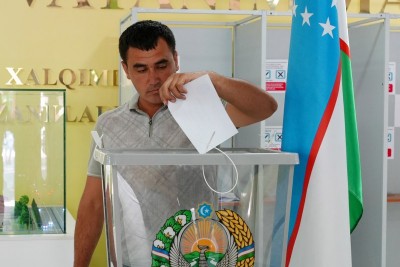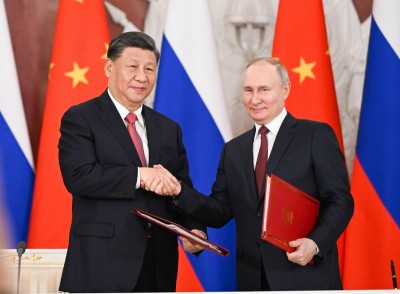
Ending violence against Indigenous women and girls is our priority: Ontario Minister
Explain with examples how you solve longstanding treaty-related disputes.
It was in August of 2015, Premier Kathleen Wynne and Ontario Regional Chief Isadore Day of the Chiefs of Ontario signed a historic Political Accord to provide a platform for First Nations and the province to work together on common priorities.I want to bring to your notice that Ontario is committed to working in partnership with the 133 First Nations communities in Ontario. It also works with other Indigenous partners to ensure that our treaty relationship is a modern and mutually beneficial one. Through respectful and meaningful dialogue, we continue to work with First Nation partners to revitalize our treaty relationship.
Three-year Treaty Strategy, discussions and initiatives to focus on the improvement of Indigenous peoples in Ontario was formed in November 2016. It is through this three-year Treaty Strategy, that our government tires to create treaty awareness and understanding of the indigenous population. In November of 2016, a series of three forums were hosted with First Nations across the province as an integral engagement piece of the Treaty Strategy. The forums were designed to surface diverse Indigenous perspectives on treaties while exploring the concept of the Treaty Relationship in a modern context.
What measures have you taken to resolve critical social emergencies in remote First Nation communities?
In the case of occurrence of social emergencies, our ministry works in coordination with federal, provincial and regional authorities to identify any gaps, short-term resource and needs. In March 2016, we held a summit in Thunder Bay with First Nations and the federal government on social emergencies in remote First Nations communities with participation from Nishnawbe Aski Nation, Grand Council Treaty #3, four remote independent First Nations, and the federal government. This upholds a key commitment made in “The Journey Together: Ontario’s Commitment to Reconciliation with Indigenous Peoples”, our government’s action plan for reconciliation.
Our government will also continue to work with the federal government, service delivery agencies and First Nation leaders to do its part in addressing medium and long-term needs related to the current crisis.
How do you propose to empower Indigenous Women now and in the future? What have you done and doing to end violence against Indigenous women?
We believe that active and decisive steps are needed to confront and eliminate the root causes of violence and ensure future generations of Indigenous women and girls are safe to live their lives free of violence. Ending violence against Indigenous women and girls is a priority for this government. That’s why in February 2016, we launched “Walking Together: Ontario’s Long-Term Strategy to End Violence against Indigenous Women”. The strategy outlines actions to prevent violence against Indigenous women and reduce its impact on children, youth, families and communities.
The legacies of colonialism, systemic discrimination, and institutional racism perpetuate behaviours and norms that lead to violence against Indigenous women and girls. With this Strategy, Ontario and Indigenous communities are coming together to end the cycle of violence and ensure future generations of Indigenous women and girls can live the way they deserve – with safety and respect.
Ontario is proud to be the first Canadian jurisdiction to launch a dedicated strategy focused on ending violence against Indigenous women developed in collaboration with Indigenous partners.
How are you helping to support local economic growth, culture, and tourism and infrastructure development for First Nation communities?
Ontario is working with Indigenous partners in a spirit of collaboration and mutual respect to improve the quality of life, develop partnerships and expand opportunities to create prosperous, healthy and strong communities. Through programs such as the, Indigenous Economic Development Fund, and Métis Voyageur Development Fund, among others initiatives, we are supporting opportunities for economic development and growth in Indigenous communities to ensure that Indigenous people have the opportunity to succeed and fully participate in the economy.
We recognize the importance of economic development to Indigenous communities and want to see meaningful employment and business development opportunities for Indigenous people across a broad range of sectors.
What have you done so far in your commitment of investing in Infrastructure and Skills Training in Northeastern Ontario?
Through our government’s Indigenous Economic Development Fund, we are supporting Indigenous communities by addressing some of the key barriers to economic development, including access to financing and skills training. Since its launch in 2014, we have provided through the Fund $25 million over three years to support promising projects that contribute to employment, training and business opportunities for Indigenous people.
In June 2016, we announced that the Fund would be extended for an additional seven years starting in 2017/18 with an annual budget of $10 million. This extension brings the total provincial investment in the Fund over ten years to $95 million.
This is in recognition of the importance of economic development and skills training to Indigenous communities, which is why we want to see meaningful employment and business development opportunities for Indigenous people across a broad range of sectors.
 What is the progress made by First Nations Trade School at Dennis Franklin Cromarty High School in Thunder Bay to support Skills Training for Indigenous Students?
What is the progress made by First Nations Trade School at Dennis Franklin Cromarty High School in Thunder Bay to support Skills Training for Indigenous Students?
Last February, thanks to investments from our government through the Northern Nishnawbe Education Council (NNEC), Dennis Franklin Cromarty High School in Thunder Bay celebrated the grand opening of three newly renovated classrooms to provide students with hands-on training and prepare them for jobs in hospitality and the skilled trades.
Renovations included: A new state-of-the-art manufacturing technology shop that will give students the tools they need to gain experience in welding; Improved ventilation, lighting and electrical systems for the school's transportation technology shop; a new kitchen for the hospitality and tourism classroom to support expanded course offerings in food and nutrition; Increasing learning opportunities for Indigenous students is one of many steps on Ontario's journey of reconciliation with Indigenous peoples. It reflects the government's commitment to work with Indigenous partners, creating a better future for everyone in the province.
This is part of our government’s commitment to build trust, prosperity and hope by expanding opportunities for Indigenous children and youth in this province.
We had learnt about your investment in Entrepreneurship Training for Indigenous Artisans. Can you highlight the progress? Is it cost-effective or more needs to done in terms of training to make it cost-effective?
Ontario is moving forward on a number of fronts to improve economic opportunities and to promote economic sustainability for Indigenous people in Ontario, including introducing initiatives that aim to increase the participation of First Nation and Métis communities in a broad range of sectors.Entrepreneurship Training helps promote well-being in Indigenous communities by funding infrastructure projects that provide community, training, and business facilities.
Tell us a little more about Environmental Assessments.
The Ministry of Environment and Climate Change is committed to protecting the environment by considering the benefits of projects alongside the possible impacts to Ontario’s environment.Through our government’s broad definition of “environment”, Environmental Assessment in Ontario balances engineering, economic, social, cultural, and natural environmental effects so that projects benefit Ontarians.
How do you ensure the protection of Aboriginal and treaty rights of the First Nations?
Aboriginal and treaty rights are constitutionally protected rights. My Ministry works to promote awareness and respect for these rights through a number of initiatives including, creating and operationalizing Ontario’s Treaty Strategy, a centre piece of which is Treaties Recognition Week, and working with Indigenous partners and partner ministers to explore options to enhance current consultation processes. The Ministry also leads negotiations of claims that involve Aboriginal and treaty rights, including for example, the current negotiations to achieve legal certainty regarding the rights of the Algonquins of Ontario.
(Interview by Suman Das and Asha Bajaj)
Image: Amnesty.ca
Support Our Journalism
We cannot do without you.. your contribution supports unbiased journalism
IBNS is not driven by any ism- not wokeism, not racism, not skewed secularism, not hyper right-wing or left liberal ideals, nor by any hardline religious beliefs or hyper nationalism. We want to serve you good old objective news, as they are. We do not judge or preach. We let people decide for themselves. We only try to present factual and well-sourced news.







